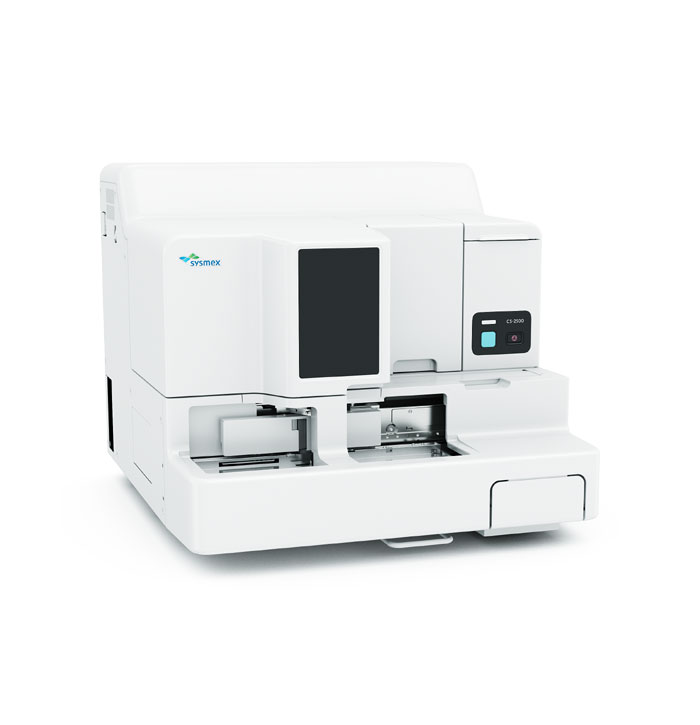The successors of the first coagulation analyser possessing a multi-wavelength analysis technology, the CS-2400 and CS-2500 systems allow medium-high volume laboratories to perform routine and specialised testing in a single analyser.

CS-2400 / CS-2500
Mid volume, fully automated haemostasis benchtop analyser that features advanced technology such as multi-wavelength detection and HIL check. It offers a wide range of assays utilising four detection methods: clotting, chromogenic, immunological (turbidimetric) and aggregometry.
Registered Under Act 737 (IVDC8558421-69696)
The CS-2400 and CS-2500 systems perform a wide spectrum of routine and specialised testing with consistent accuracy and reliability, usability designed with Medical Technologists in mind, and provide extra support to laboratory accreditation and documentation requirements.
Consolidation of routine and specialised testing
Consistent accuracy and reliability
Advanced usability
Support laboratory accreditation requirements and documentation requirements
1. Shima M, Thachil J, Nair SC, Srivastava A. Towards standardization of clot waveform analysis and recommendations for its clinical applications. J Thromb Hemost. 2013; 11:1417-20.
| CS-2500 | CS-2400 | |
| Detection principles | Multi-wavelength detector for transmitted light at 340, 405, 575, 660 and 800 nm | Multi-wavelength detector for transmitted light at 340, 405, 575, 660 and 800 nm |
| Detection channel/method | 10 channels for clotting, chromogenic and immunoassays (4 of these channels are also be used for platelet aggregation assays) | 10 channels for clotting, chromogenic and immunoassays (4 of these channels are also be used for platelet aggregation assays) |
| Parameters | up to 60 parameters can be analysed simultaneously | up to 60 parameters can be analysed simultaneously |
| Throughput | PT: 180 tests/h PT/APTT: 115tests/h |
PT: 180 tests/h PT/APTT: 115tests/h |
| Sampling | Continuous loading of maximum 5 racks of 10 tubes each, cap-piercing functionality 5 dedicated STAT positions |
Continuous loading of maximum 5 racks of 10 tubes each, non-cap piercing functionality 5 dedicated STAT positions |
| Reagent holder | 40 tilted reagent vial positions (10°C), 10 with mixing function 5 positions (room temperature) All positions with positive reagent identification |
40 tilted reagent vial positions (10°C), 10 with mixing function 5 positions (room temperature) All positions with positive reagent identification |
| Reference curves | Maximum 10 reference curves per lot Maximum 10 lots per parameter Maximum 250 parameters |
Maximum 10 reference curves per lot Maximum 10 lots per parameter Maximum 250 parameters |
| Quality control | X-bar control, Levy-Jennings control Multi-rule (Westgard Rule) monitoring 750 files with maximum 1,200 data points each |
X-bar control, Levy-Jennings control Multi-rule (Westgard Rule) monitoring 750 files with maximum 1,200 data points each |
| Data storage | Up to 10,000 sample results with reaction curves | Up to 10,000 sample results with reaction curves |
| Printer | Graphic or Data Printer (optional) | Graphic or Data Printer (optional) |
| Dimensions (WxHxD)/weights | Main unit: 775 × 685 × 895 mm, 110 kg (approximate)Pneumatic unit: 280 × 400 × 355 mm, 17 kg (approximate) |
Main unit: 775 × 685 × 895 mm, 110 kg (approximate)Pneumatic unit: 280 × 400 × 355 mm, 17 kg (approximate) |
- Features & Benefits
-
The CS-2400 and CS-2500 systems perform a wide spectrum of routine and specialised testing with consistent accuracy and reliability, usability designed with Medical Technologists in mind, and provide extra support to laboratory accreditation and documentation requirements.
Consolidation of routine and specialised testing
Consistent accuracy and reliability
Advanced usability
Support laboratory accreditation requirements and documentation requirements
1. Shima M, Thachil J, Nair SC, Srivastava A. Towards standardization of clot waveform analysis and recommendations for its clinical applications. J Thromb Hemost. 2013; 11:1417-20.
- Assay
-
- Specifications
-
CS-2500 CS-2400 Detection principles Multi-wavelength detector for transmitted light at 340, 405, 575, 660 and 800 nm Multi-wavelength detector for transmitted light at 340, 405, 575, 660 and 800 nm Detection channel/method 10 channels for clotting, chromogenic and immunoassays (4 of these channels are also be used for platelet aggregation assays) 10 channels for clotting, chromogenic and immunoassays (4 of these channels are also be used for platelet aggregation assays) Parameters up to 60 parameters can be analysed simultaneously up to 60 parameters can be analysed simultaneously Throughput PT: 180 tests/h
PT/APTT: 115tests/hPT: 180 tests/h
PT/APTT: 115tests/hSampling Continuous loading of maximum 5 racks of 10 tubes each, cap-piercing functionality
5 dedicated STAT positionsContinuous loading of maximum 5 racks of 10 tubes each, non-cap piercing functionality
5 dedicated STAT positionsReagent holder 40 tilted reagent vial positions (10°C), 10 with mixing function
5 positions (room temperature)
All positions with positive reagent identification40 tilted reagent vial positions (10°C), 10 with mixing function
5 positions (room temperature)
All positions with positive reagent identificationReference curves Maximum 10 reference curves per lot
Maximum 10 lots per parameter
Maximum 250 parametersMaximum 10 reference curves per lot
Maximum 10 lots per parameter
Maximum 250 parametersQuality control X-bar control, Levy-Jennings control
Multi-rule (Westgard Rule) monitoring
750 files with maximum 1,200 data points eachX-bar control, Levy-Jennings control
Multi-rule (Westgard Rule) monitoring
750 files with maximum 1,200 data points eachData storage Up to 10,000 sample results with reaction curves Up to 10,000 sample results with reaction curves Printer Graphic or Data Printer (optional) Graphic or Data Printer (optional) Dimensions (WxHxD)/weights Main unit:
775 × 685 × 895 mm, 110 kg (approximate)Pneumatic unit:
280 × 400 × 355 mm, 17 kg (approximate)Main unit:
775 × 685 × 895 mm, 110 kg (approximate)Pneumatic unit:
280 × 400 × 355 mm, 17 kg (approximate) - Video
-
- Documents


